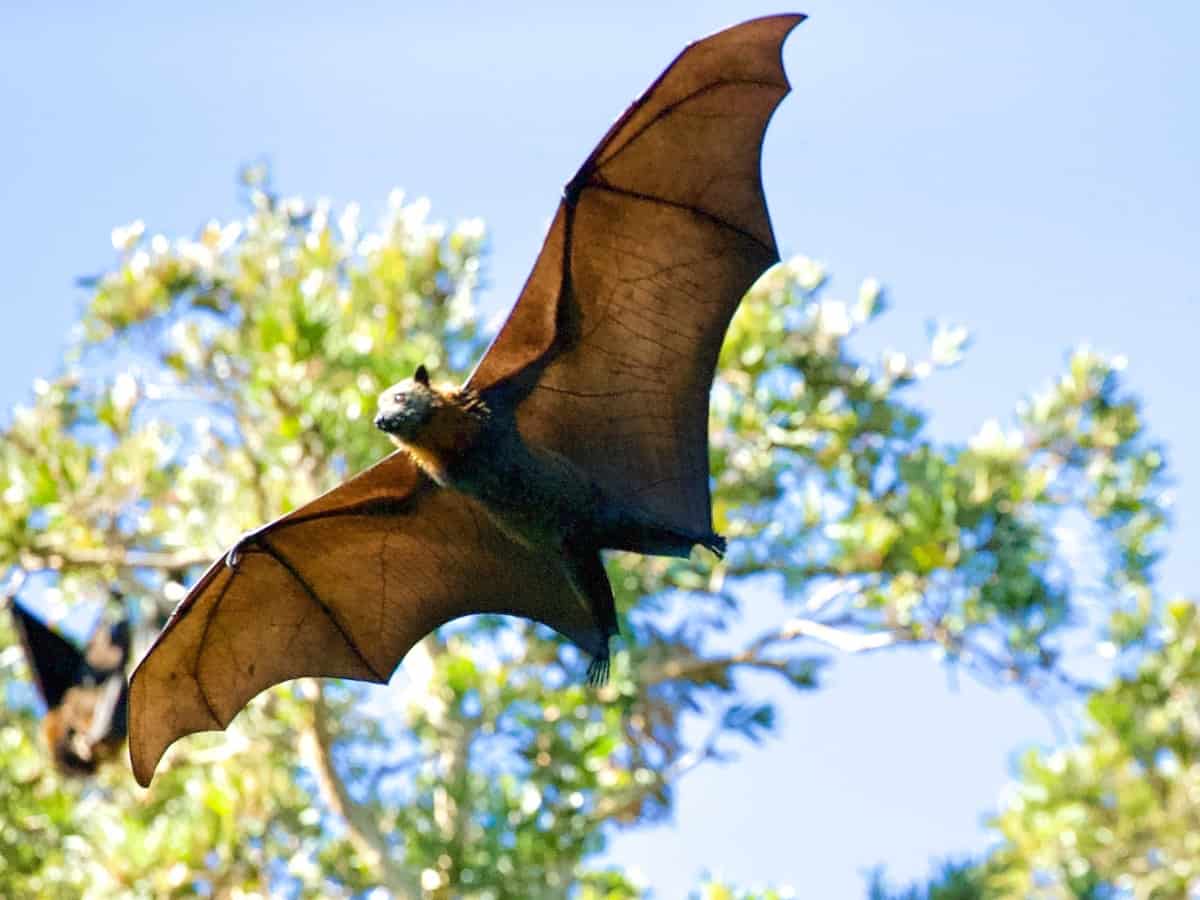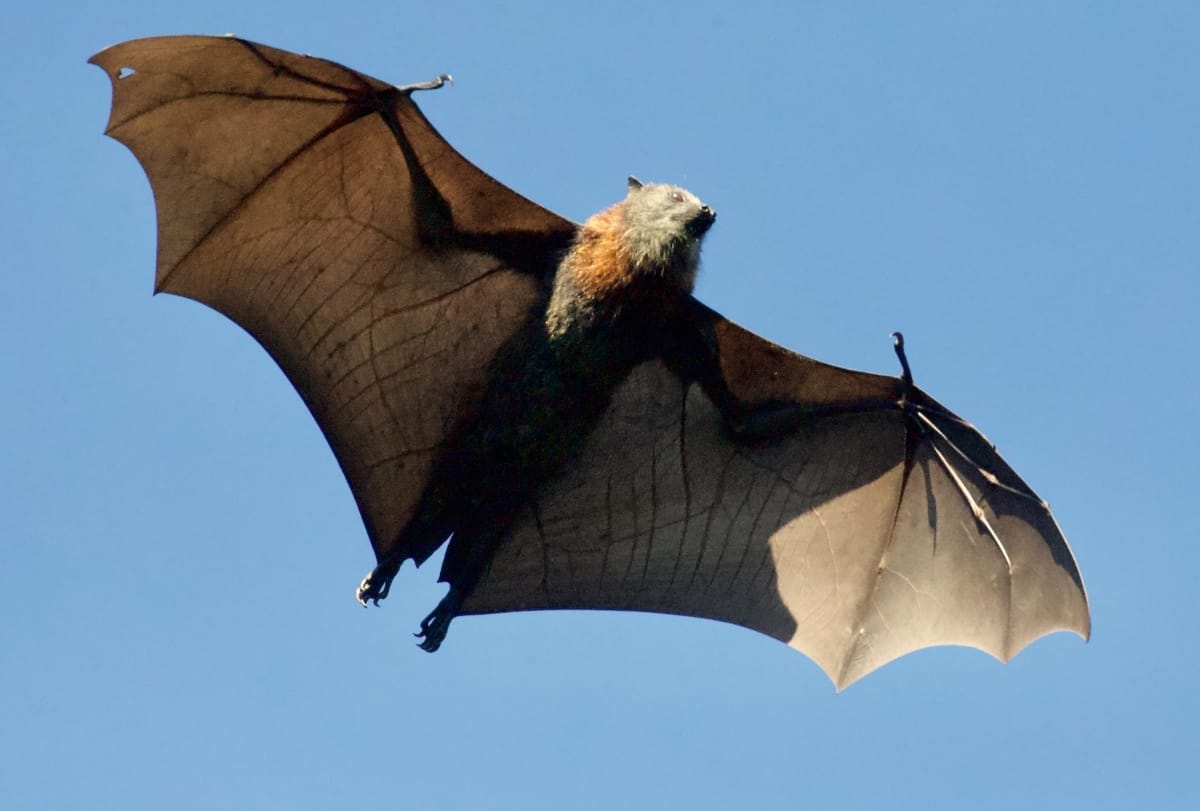Bats are becoming more of a problem in urban and suburban areas, despite the fact that they are typically associated with the outdoors or caverns. Once they find a place to roost -typically attics, chimneys, or the edges of roofs- bats that may have been hanging around the neighborhood may eventually decide to move inside.
It can feel like something out of a horror film when you come across a bat in or around your house and when this is the case most people don’t lose time to reach out to a bat removal service.
Bats are frequently discovered in basements, chimneys, and attics that haven’t seen the light of day in a long time.
Although you might be wondering how they made themselves at home, these mammals have no trouble entering buildings.

Bats don’t need a lot of room, and their flexible bodies enable them to fit into tight areas. Although they are not violent animals, bats will bite, scratch, or screech if they feel threatened.
When they have bat droppings that are known to contain bacteria that can cause diseases, or when they are infected with rabies, they are most dangerous.
Bats are beneficial to the environment and can even eat other pests, but they shouldn’t be kept indoors. Over time, a bat colony can cause significant harm to both your house and your well-being.
You must take immediate action if you find bats skulking around your house. Handling a bat infestation can be challenging, though, as it is illegal to eradicate bats or use pesticides on them in the United States.
For professional, humane bat removal, give a reputable pest control business a call. However, it could be beneficial to have some knowledge beforehand.
Bats can be recognized by their small, delicate wings and furry bodies. The only flying mammal in the world, bats typically reside in hollow trees and caverns. Worldwide, more than 1,000 distinct species of bats have been identified.
There are more than 40 species of bats in the United States. Bats can boost the local economy and are essential to the ecosystem. American bats are primarily insectivores. For example, 1,000 mosquitoes can be consumed by one bat in an hour.
Experts in wildlife control clarify that there are ten distinct species of bats. Some of them are Little Brown Bats, Evening Bats, Hoary Bats, Silver-haired Bats, Eastern Red Bats, Tri-colored Bats, and Eastern Small-footed Bats.
Even though human-bat interactions are uncommon, disputes may arise when a bat inadvertently enters a house or place of business or when mother bat colonies take up residence in a deserted building.
It’s crucial to confirm that you are dealing with a bat by first identifying it. Time and money can be wasted if the incorrect treatment approaches are used as a result of misidentification.
Bats seek out quiet, isolated places indoors for a warm place to stay when the temperature drops. Go outside and check your house’s exterior, the area above the roof, and the area surrounding the chimney. You can search your basement or attic indoors for them.
The bats themselves or indications of their presence are what you want to seek for. Bat droppings or guano is the most overt indication that they are present in a given area.
The excrement left by bats is greasy, asymmetrical, and sharp at the tips. Make sure to take swift action to eradicate the infestation if you discover a concentration of droppings in one place.
When you have located the bat colony and determined where it is on your property, you can start a professional pest control treatment from a reputable company.

As a matter of fact, certain types of bats help spread seeds, pollinate plants, and consume populations of beetles and other insects that ruin crops. Even though these kinds of animals can benefit the environment, letting them into your house puts your safety and health at risk.
Bat nesting in your house or place of business can be an annoyance. Guano, the term for bat poop, and bat nests can, among other things, induce allergies, leave unsightly stains, and emit foul smells.
However, the fact that bats can carry diseases is the most dangerous issue with a bat infestation. Spores of a fungus that can cause histoplasmosis are airborne and can be found in bat dung. Although it is uncommon, this can worsen and result in pneumonia, influenza-like symptoms, or even death.
It is extremely risky for homeowners to come into contact with bats as this can expose them to rabies, a painful and potentially fatal disease. Bites, scratches, and even handling bats can cause rabies.
Moreover, ticks, fleas, and mites can be carried by bats.
Actually, unless provoked, a bat is very unlikely to attack a human. They don’t intentionally seek out or attack people. A healthy bat, on the other hand, will typically fly away from you.
A bat that you see outside at night is not looking for a person to attack. Bats that are flying around at night are likely hunting insects, which they eat during the night.
Put simply, all healthy bats attempt to flee from people and are not intentionally hostile.
Even though bats rarely bite people, wildlife control specialists caution that, like most wild animals, they can carry the rabies virus. Bites from bats are typically minor and may even go undetected.
Therefore, if you come across evidence of a bat in an area where there are kids, elderly people, or people who may be disabled from dementia or another condition, please report it.
Start and end times for bat remediation are determined by the individual states and differ significantly among them. Before the young are born, usually in April or May, or after they can fly, usually in August or October, bat removal can be done.
Mother colonies are federally protected, and it is against the law in every state to interfere with or exclude them.
The weather and temperature during the night are other factors that affect bat removal. Bat activity decreases when temperatures fall below sixty degrees, which also reduces flying insect activity at night. Because they do not emerge at night to feed, this makes removing bats more challenging.
If exclusion is begun too early in the season, bats may become trapped inside a house and cause additional issues. Bats that get trapped will eventually die and release an unpleasant stench throughout your house.
Early bat removal can also result in the entrapment of young, flightless bats. As a result, you will see more female bats circling your home’s exterior in an attempt to find a different entrance for their young.
Before attempting any do-it-yourself pest control techniques, get in touch with a trustworthy pest control company if you discover bats hibernating in your home during the winter.
The best defense against bats breaking into your house or place of business is routinely inspecting the structure to make sure there are no openings for them to enter.
Inspecting areas like chimney flues, holes and fissures in damaged siding, fascia, or soffits, beneath the eaves, the gaps between the walls, and the openings made for utility lines and ventilation are among the areas the pest control specialists advise looking into.
While it’s not a 100% guarantee, leaving a light on may discourage bats from entering your house. Nighttime creatures and bats are drawn to peaceful, dark areas.
Bats may decide to relocate to a different area to roost if they feel exposed or uneasy in your home while the light is on. Still, the bats might get into your house if the light is too dim or if they are in need of a place to stay.
Some people use loud noises to startle bats and get them to leave because they are sound-sensitive. Nevertheless, it’s important to remember that noise by itself doesn’t always work to keep bats away. A bat’s acclimatization to the noise may eventually cause it to be ignored. Humans and other animals may also find the noise to be far more annoying.
Closing up any openings in your home is a much more dependable strategy to keep bats out of it.
It is widely believed that some natural scents repel bats, which have a keen sense of smell. Certain homeowners use garlic, cloves, eucalyptus oil, peppermint oil, and cinnamon as bat repellents. But by no means is this a foolproof approach.
Most conventional insect or rodent repellents do not work well on bats, despite the fact that some pests may be repelled by scents. Being versatile animals, they possess strong homing instincts. Although mothballs, ammonia, or strong-smelling plants might work in the short term, they are not dependable long-term fixes.
That’s why getting professional assistance is the only way to keep them away.
Bat pest control problems must be handled with extreme caution because the majority of bat species may be protected and require careful conservation. Titan Pest uses humane and scientifically proven methods to eradicate pest bats.
Titan is able to implement tactical preventive measures to keep bats at bay by drawing on his extensive knowledge of bat habits and behaviors for pest control. The most effective method of getting rid of a bat infestation in your house or place of business is to use an exclusion procedure.
One-way doors are installed by their highly skilled wildlife control technicians, allowing bats to exit the building for food but preventing them from returning. The pest bat population is typically eradicated using this highly effective method in a matter of days.
The wildlife control specialists at Titan can perform bat exclusion from April 1 through April 30 and from August 1 through October 15. According to the NJ Division of Fish and Wildlife, these times are set aside as safe dates for the humane exclusion of nuisance wildlife from areas where bats could be harmed.
A thorough internal and external inspection will be carried out by the Titan inspector. When visiting an attic with bats, it is crucial to wear a respirator due to the risks of guano exposure.
Following an inspection, Titan experts will create a special plan for your house that will safely get rid of the bats and seal them properly. In addition, our inspector will inform you about our recurring programs and offer warranty options.
One of the trickier pest issues to solve is a bat infestation since there are dangers involved and regulations to take into account before you start. For this reason, if you want to get rid of the bats in your space, you should give Titan Pest Services a call right away!